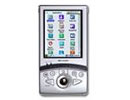'ZDNET Recommends': What exactly does it mean?
ZDNET's recommendations are based on many hours of testing, research, and comparison shopping. We gather data from the best available sources, including vendor and retailer listings as well as other relevant and independent reviews sites. And we pore over customer reviews to find out what matters to real people who already own and use the products and services we’re assessing.
When you click through from our site to a retailer and buy a product or service, we may earn affiliate commissions. This helps support our work, but does not affect what we cover or how, and it does not affect the price you pay. Neither ZDNET nor the author are compensated for these independent reviews. Indeed, we follow strict guidelines that ensure our editorial content is never influenced by advertisers.
ZDNET's editorial team writes on behalf of you, our reader. Our goal is to deliver the most accurate information and the most knowledgeable advice possible in order to help you make smarter buying decisions on tech gear and a wide array of products and services. Our editors thoroughly review and fact-check every article to ensure that our content meets the highest standards. If we have made an error or published misleading information, we will correct or clarify the article. If you see inaccuracies in our content, please report the mistake via this form.
Sharp Zaurus SL-5600


Sharp Zaurus SL-5600
pros and cons
- Built-in keyboard
- 96MB of combined memory
- CompactFlash and Secure Digital slots
- compatible with Microsoft Outlook and Palm Desktop
- excellent audio.
- Big and heavy
- dull screen
- limited third-party software
- lacks jog dial.
- Editors' review
- Specs
A year and a half ago, Sharp introduced its Linux-based Zaurus SL-5500, which featured a 206MHz StrongARM processor, 64MB of memory and a unique mini-keyboard. But lacking the speed, the polished interface and the software of a Pocket PC or Palm OS handheld, it merely registered a loud yawn. Enter the SL-5600, an evolutionary development with a 400MHz processor, 96MB of storage and a slew of software. The new Zaurus is now one of the fastest and best-equipped handhelds available -- although it's a bit big, needs a brighter screen and can't touch the established order's third-party software.
Design
At 13.7cm by 7.4cm by 2.3cm and 221g, the sleek, silver Zaurus SL-5600 is not only thicker and heavier than its predecessor, but it makes handhelds such as Toshiba's Pocket PC e750 and Palm's Tungsten C look compact. It's also nearly twice the weight of Handspring's Treo 90. Add in the 198g AC adapter and cord, and the SL-5600 hits the ground at more than 400g. The SL-5600's accurate 3.5in. touch-screen is the centre of attention, although it's an older, reflective TFT rather than a new-style transflective display. We liked the clear-plastic screen cover, but it comes off all too easily and doesn't form a stand when you flip it over. Pull down the bottom of the unit, and you'll find a minimalist 37-key QWERTY keyboard. At 4.7mm across and spaced 2.4mm apart, the oval Chiclet-style keys are sufficient for tapping out one-line emails and short lists, but too cramped for marathon typing sessions. The SL-5600 has reasonably accurate handwriting recognition, and there's a handy place to stash the stubby plastic stylus. Although the on-screen keyboard is not much help, the PickBoard predictive spelling application helps you find common words. In addition to dedicated Calendar, Contacts, Home Screen and Email keys, as well as a program launcher, the SL-5600 has a five-way navigation button. But its most notable absence is a jog dial at the side for quickly running through lists or Web pages. A standard headphone jack is conveniently placed at the top of the unit, and the rear speaker is surprisingly loud. On the other hand, the SL-5600's microphone is pointed to the side and back, so it's likely to pick up stray noise. The SL-5600 comes with a USB 1.1 synchronisation cradle to connect to a host PC. For older computers, Sharp offers an optional serial port adapter. The good news is that you can plug the AC adapter directly into the SL-5600 when you want to leave the cradle behind. Sharp says the 1,700mAh lithium-ion battery takes up to four hours to charge, but it can rejuice in as little as an hour and can be changed in a few seconds.
Features
With a 400MHz Intel XScale processor and 96MB of combined memory (32MB of active SDRAM and 64MB of flash memory), the SL-5600 is one of the best-equipped handhelds around. With the Linux OS and the included applications taking up 34MB, there's still room for additional programs, addresses, appointments and a backup. If that proves constricting, you can augment your storage with Secure Digital and CompactFlash cards, including IBM's 1GB Microdrive hard disk. This well-featured handheld comes with a generous batch of software, including the Opera Web Browser, an email client, a calendar, an address book and a to-do list. If time hangs heavy, there's a clock and a world-time map. You also get ImagePad, which displays and edits pictures, as well as running slide shows. It's also excellent for doodling with the stylus. Hancom's Mobile Word, Sheet and Presenter are competent applications and compatible with their Microsoft counterparts (Word, Excel and PowerPoint respectively), but none have spelling checkers. The SL-5600 works with PCs only, although it can synchronise with Microsoft Outlook or Palm Desktop software. If you run neither, you can use Sharp's Qtopia desktop, which mirrors the handheld's functions. Although the body of third-party software for the Zaurus is growing, it still can't hold a candle to the breadth and scope of software available for Palms and Pocket PCs. The SL-5600's seven games -- including an updated version of Asteroids -- can make hours pass quickly, but the Media Player is a mixed bag, with choppy MPEG video and poor sound synchronisation. It shines as an MP3 player, with superb fidelity and volume, and you can switch between applications while listening to music, although doing so sometimes causes clicks and interruptions in the sound. The SL-5600 has infrared, but it lacks Wi-Fi. However, we were able to get a Socket low-power WLAN card working, and a variety of approved cellular, networking and dial-up modem CompactFlash cards are also available.
Performance
The SL-5600 uses a 400MHz Intel PXA250 XScale processor -- not the low-voltage PXA255, which has a faster CPU bus and uses less power. With 32MB of SDRAM and 64MB of flash memory, the SL-5600 gives you plenty of room to work in. Taking about 3 seconds to start or close programs, we were able to back up the system in 2 minutes and restore it in 3 minutes and 15 seconds, including restarting the system. As an indication of its speed, the SL-5600 took 27 seconds to synchronise 760 contacts and two months' worth of appointments with a Toshiba Satellite Pro 6100 host notebook. That's about 10 seconds slower than with a Toshiba e740, although both systems use the same CPU. Each moved data back and forth at 115Kbps over their USB connections. The SL-5600's 3.5in. screen displays 240 by 320 pixels with a 65,536-colour palette, but it's something of a letdown. Everything looks sharp and detailed, but the front-lit display is dim, even at maximum brightness in a darkened room. With the screen brightness at the default setting of full power, the SL-5600 played MP3 music for 4 hours and 10 minutes on its 1,700mAh battery -- an hour more than Toshiba's e740, which has a much smaller battery. With the screen light off, the device pumped out music for more than 10 hours.